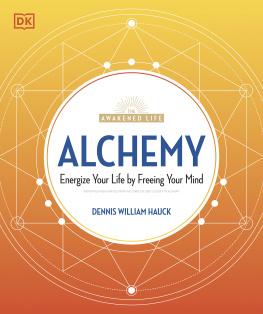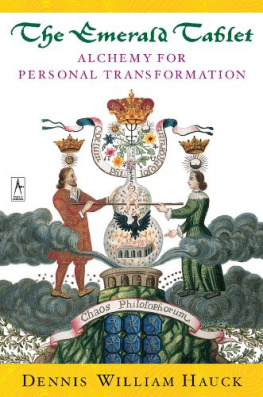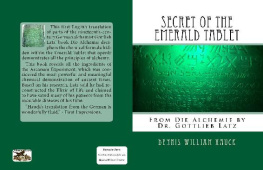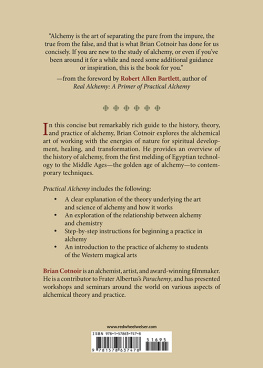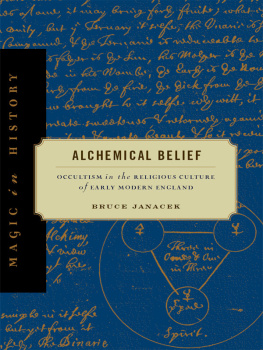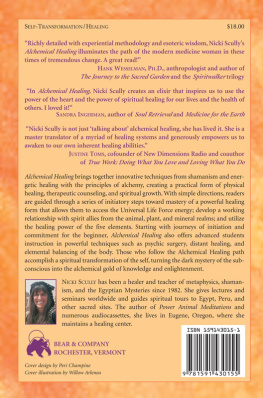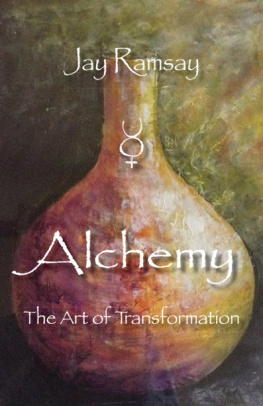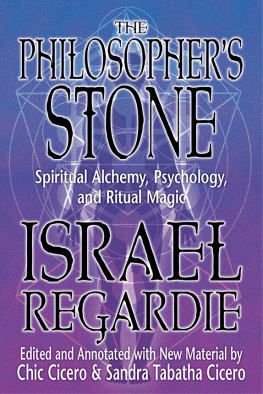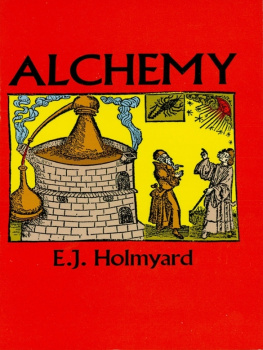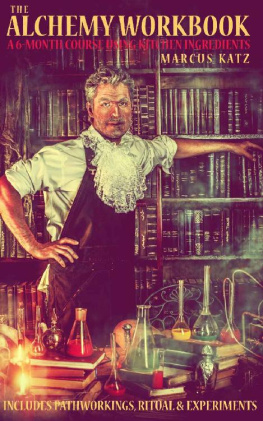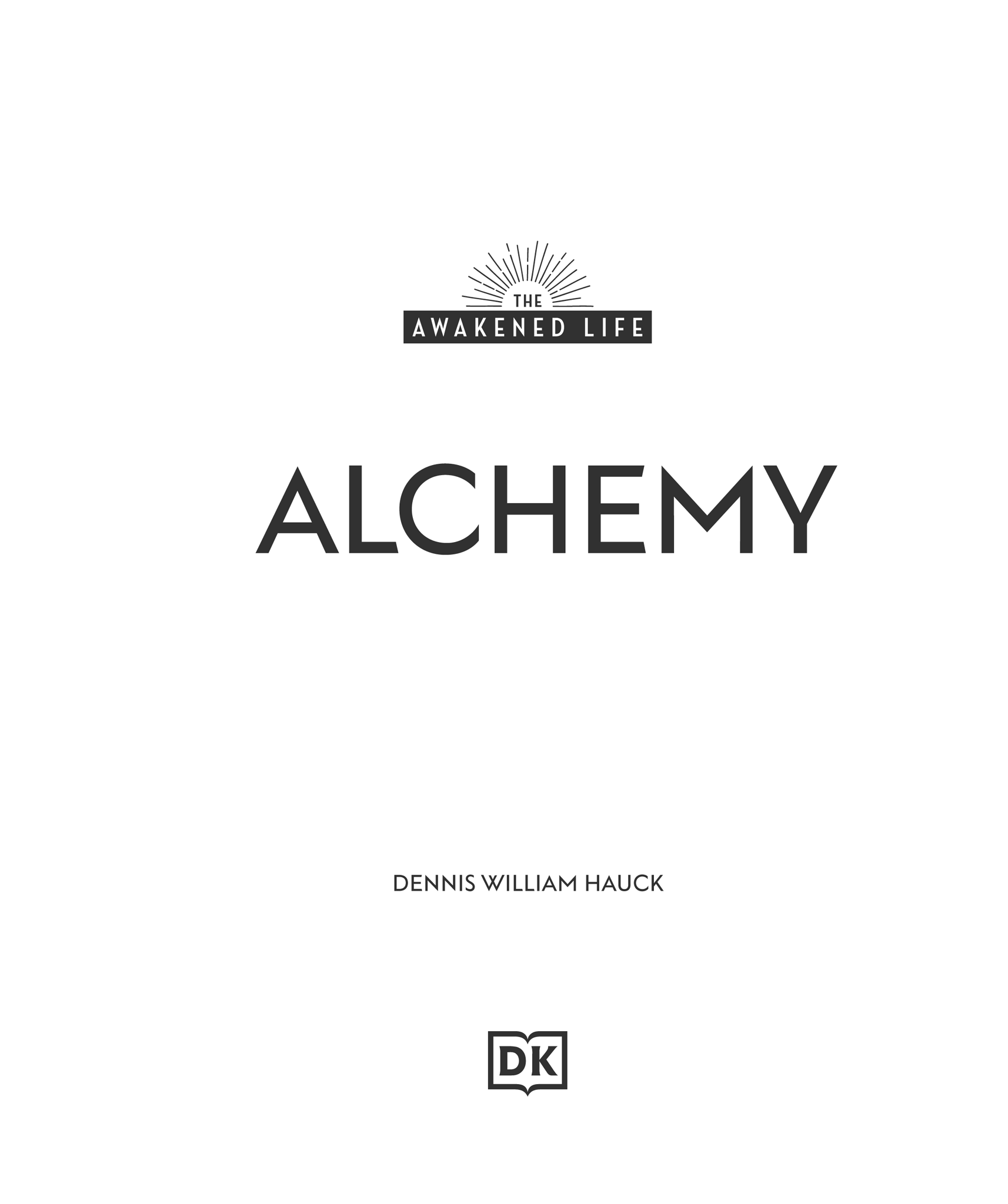CONTENTS
Landmarks
Contents
g
How to use this eBook
Preferred application settings
For the best reading experience, the following application settings are recommended:
- Orientation: Portrait
- Color theme: White background
- Scrolling view: [OFF]
- Text alignment: Auto-justification [OFF](if the eBook reader has this feature)
- Auto-hyphenation: [OFF](if the eBook reader has this feature)
- Font style: Publisher default setting [ON](if the eBook reader has this feature)
g
Introduction
My initiation into alchemy came while I was attending the University of Vienna. I had gone there to study mathematics in the tradition of Viennese logician Kurt Gdel. However, within three months of my arrival, I was sidetracked into an ancient and mystical discipline of which none of my professors approved.
Four hundred years earlier, Vienna and nearby Prague were at the heart of European alchemy, and hundreds of alchemists flocked to the area. I was unaware of Viennas rich alchemical tradition until I stumbled into a basement room in the university library that was full of old alchemy books.
The old Fraktur texts were difficult to decipher, but it was the strangely profound drawings that resonated with me. Whatever was going on in those drawings seemed more real than anything that was going on in my life at the time, and I wanted to be part of it. I resolved to learn as much as I could about alchemy and began studying the dusty old manuscripts.
My intense interest in alchemy seemed to open a channel in me, and I began seeing alchemical imagery in my dreams and everywhere I went in Vienna. It was as if alchemy was taking an interest in me. Old treatises, engravings, and alchemical symbols somehow found their way into my life. Finally, a chemistry professor gave me the name of a practicing alchemist who might be willing to teach me more.
The alchemists name was Merus Favilla. He practiced alchemy in Prague for more than 20 years, and he lived and breathed the ancient art. Although I was elated when he took me on as an apprentice, the way he taught was different from anything I had ever experienced. He never organized his teachings and only spoke of broader principles when he was inspired by a particular outcome or event. He encouraged chaos and freethinking and despised expectation and the smugness of knowing. Merus believed his state of mindthe way he observed an experimentcould influence its outcome.
Yet Merus never thought of himself as a wizard or magician. He was a deeply mystical man who hid his true nature from the world. His Latin craft name, Merus Favilla, hints at his deeply held beliefs. His name means the truth (or value) in the still-burning embers of the dead.
The light that survives in the ashes, he once explained, is awareness itself that we all take for granted. For him, understanding the value of consciousness was the key to doing alchemy. I soon learned that this idea was a common thread in alchemy. The fabled Philosophers Stone was the alchemists symbol for purified consciousness and heightened awareness. As the Belgian alchemist Gerhardt Dorn (15201584) put it: You must transmute yourselves from dead stones into living Philosophical Stones.
Unlike dry academic disciplines, alchemy comes alive within you if you are ripe for it. And it can grow into something that is more than the sum of its parts. That is when the true secret teachings begin and when unexpected transformations happen. There is some sort of energetic connection to the principles of alchemy that is synergistically empowering to a persons consciousness. True alchemists know exactly what I am talking about, and by the time you are done with this book, I hope you will, too.
So, let your apprenticeship begin now! Start the work as a novice, like card Zero (The Fool) on the transformational path of the Tarot, which depicts a free-spirited vagabond who carries everything he needs in his knapsack. Forget anything you thought you knew about alchemy and alchemists. You are now awakening to a new way of understanding and a new path of enlightenment. Free your mind. And dont worryyou have everything you need hidden inside you. Just come as you are.
How This Book Is Organized
The objective of this book is to teach you the alchemists coded language so you can work with the powerful principles they used and apply them in your own life. We will go right to the heart of this ancient and complicated tradition with no unnecessary secrecy, no pompous theorizing, and no special allegiance to any particular tradition or organization. The goal is to glean the essence of what the alchemists were talking about and unveil the universal methods of transformation they discovered.
Following the style of the alchemists, major philosophical concepts are capitalized to differentiate them from their mundane meanings. For example, sulfur refers to the flammable yellow chemical that is also known as brimstone, while Sulfur refers to the underlying principle of fire, passion, and energy that the alchemists associated with that substance. Similarly, the terms Above and Below are philosophical concepts related to our ideas of Heaven and Earth.
The material in this book is divided into five sections:
Part 1, Discovering the Hidden Roots of Alchemy, traces how the craft developed from the mythic writings of godlike beings into the philosophical treatises of the Alexandrian alchemists. From alchemys origins in ancient Egypt to the founding of the Great Library, the basic tenets of alchemy were well developed long before the heyday of the medieval alchemists.
Part 2, Working in the Inner Laboratory, describes what went on in alchemists workshops. They devoted all levels of mind, body, and spirit to the Great Work and suffered through the same agonizing transformations as the materials in their experiments. The secret connection between mind and matterestablished through meditation and prayerwas essential to making tinctures and elixirs and transforming base metals into noble ones.
Part 3, Applying the Principles of Alchemy in Your Life, reviews the fundamental concepts of alchemy and shows how they are part of all we experience in the world. These primordial principles are embedded in the fabric of creation and are expressed on all levels of reality, from our bodies and personal psychology to the evolution of the stars and galaxies. Awareness of these archetypal patterns helps us understand and manage the chaotic forces that surround us.
Part 4, Performing the Operations of Alchemy, reveals the secret processes alchemists used to achieve their transformations. These universal operations worked simultaneously on all levels of realitythe physical, the mental, and the spiritual. You will learn how the principles are applied in lab work, healing and rejuvenation, personal psychology and relationships, and social and planetary alchemy.
Part 5, Understanding Alchemical Consciousness, points to the key to unlocking the mysteries of alchemy, as well as personal transformation and psychology, biology and the life sciences, and quantum physics and cosmology. Not only were alchemists the first chemists, they were the first doctors and healers, the first psychologists, and the first explorers of a science of consciousness. From their wisdom, we offer a cosmological model of the role of consciousness in the universe.

